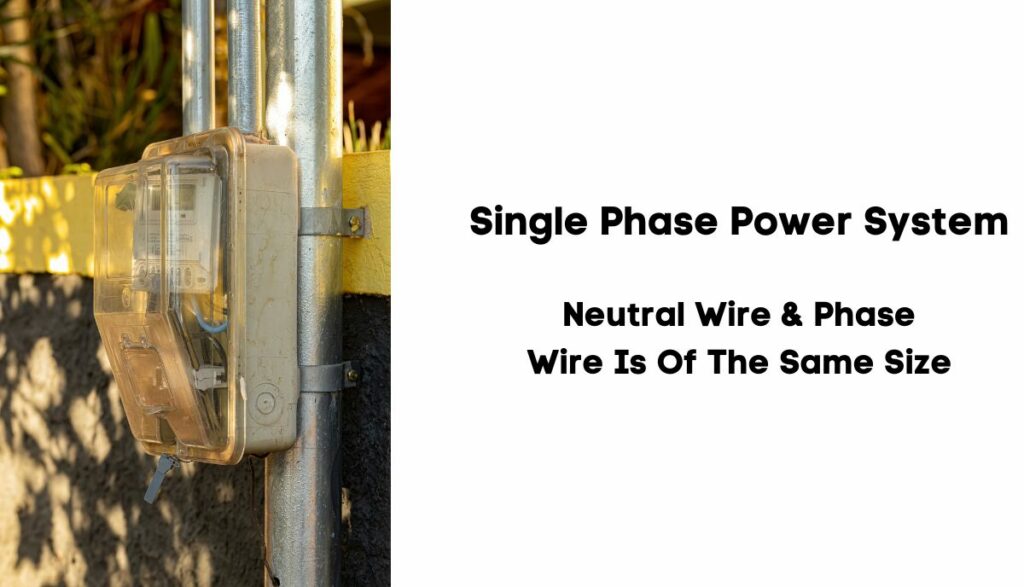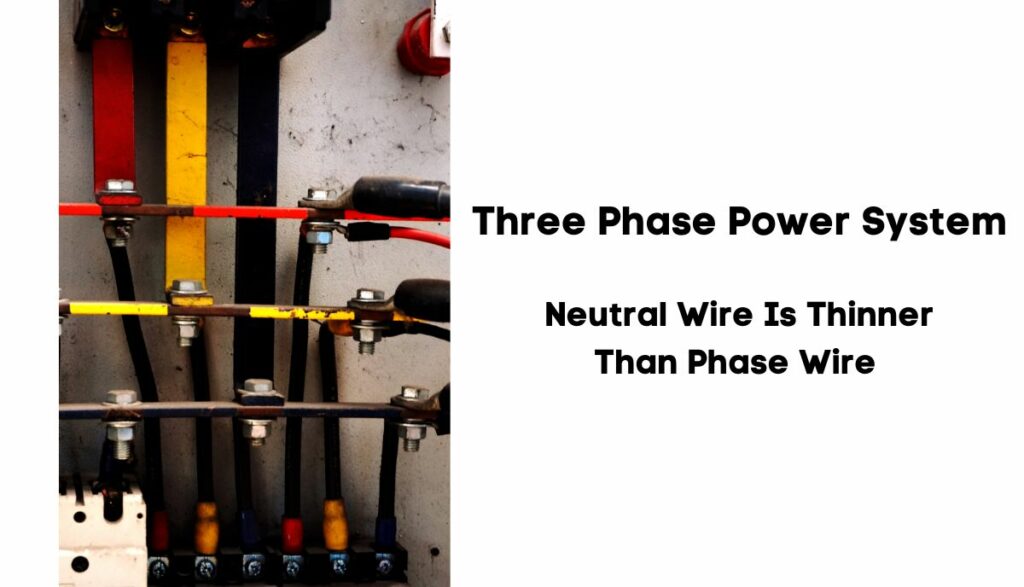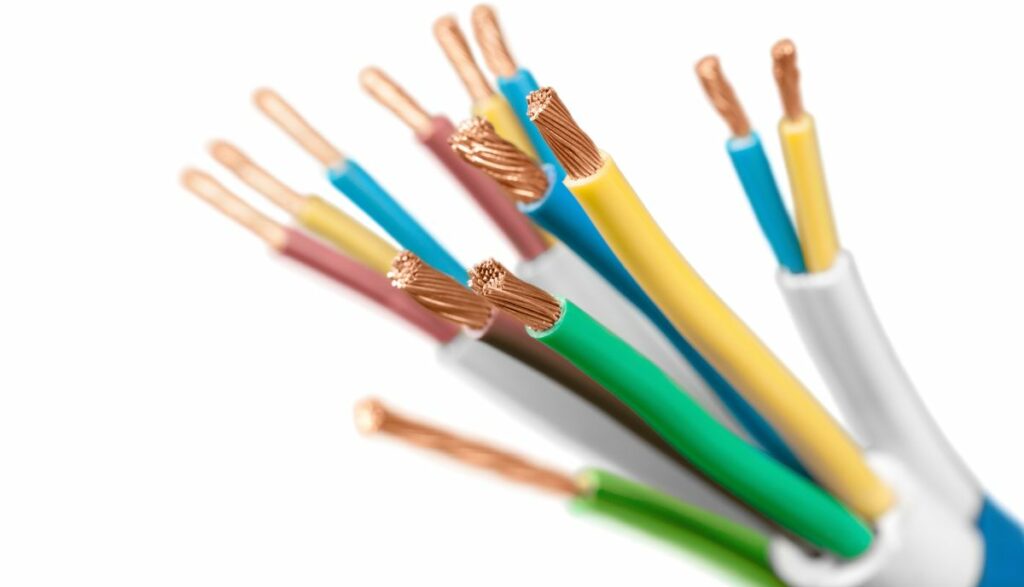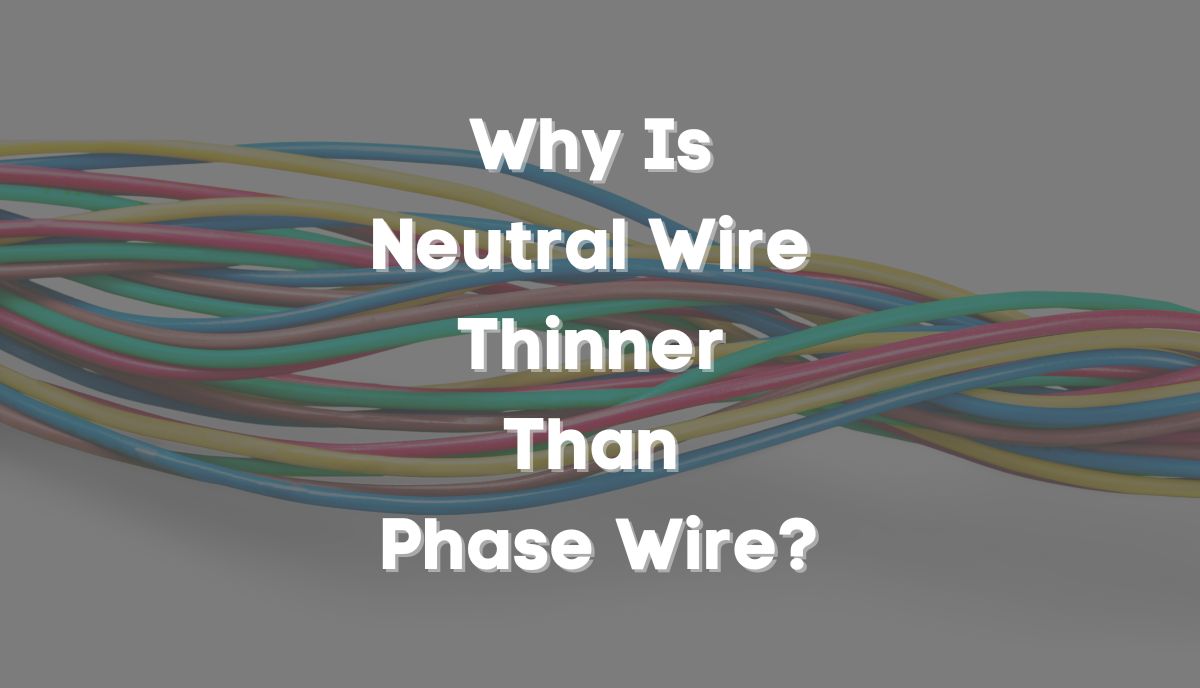In a single-phase system, the neutral wire matches the size of the phase wire, promoting a balanced current flow. However, in three-phase systems, the neutral may be thinner due to lower current during imbalances. This sizing strategy prevents overheating and enhances electrical safety.
The neutral and live wires usually carry a current. However, they play different roles. The live wire brings the current from the panel. The neutral returns that electricity. The size matters because it affects the wire’s ability to carry the current.
A small wire is a threat because it will overheat. A large wire is a waste of money if the application doesn’t need it. Most laypeople focus their attention on the live wire’s gauge. They want a cable large enough to carry the power they need without overloading and starting a fire.
But what about the neutral wire? What is the correct size for this line? Should you make the neutral thicker or thinner than the phase wire? This is what you should know:
1). Single Phase System – Live & Neutral Wire Is Of The Same Size

The neutral in a single-phase circuit is the same size as the phase wire. Keep in mind that a neutral in this configuration will return the current the hot wire brought from the main panel. In other words, the live and neutral wires must transmit the same amount of electricity.
For that reason, installing a thinner neutral wire wouldn’t make sense. Make them equal to maintain the circuit’s performance.
2). Three Phase Power – Neutral Wire Is Thinner Than Phase Wire

A thinner wire only makes sense in three-phase circuits. The current in a three-phase system flows between the phases. Each phase boasts the same electrical draw. Any current the neutral transmits is small.
Even though you still need the neutral, you can afford to keep it small because it only carries a current when an imbalance between the phases manifests. Sparky Pedia has given the example of a setup that runs a toaster oven and a vacuum simultaneously.
The toaster pulls 12A from one of the legs to neutral while the vacuum uses 10A from the other leg to a shared neutral. The two amps resulting from the imbalance on the legs will flow on the neutral. Many contractors use smaller neutrals to reduce costs.
You may find a thinner neutral in 120/220VAC appliances where the neutral provides a return path for the control circuit.
Ultimately, if you hire a professional, they won’t install a thinner neutral unless it serves a purpose. Take the thin neutral in your configuration as a sign that your electrician expected the neutral to carry a lower current than the phase wires.
Although, you shouldn’t reach that conclusion without consulting an expert. Even with three-phase systems, the neutral current is not always low. In other words, you should assume that a thin neutral in your circuit is a mistake until an electrician tells you otherwise.
Are There Specific Electrical Standards That Dictate The Sizing Of Neutral And Phase Wires In Circuits?
- IEC 60364-5-52 compels contractors to use the same cross-sectional area for neutral and live wires in a single-phase circuit.
- You should also consider 220.61 (Feeder or Service Neutral Load) in the National Electrical Code that tells electricians how to size the neutral conductor.
- The NEC provides wire size charts that detail the sizes of different types of cables. It bases the wire sizes on factors like the material, temperature, and load size.
- You should check list of all the terms the NEC uses when it mentions the neutral wire. If you’ve never read the document, you may not realize that a ‘Grounded Conductor’ is the neutral wire.
Don’t limit your search to the NEC, even though most electricians in the United States base their decisions on the document. While many states use the NEC, local authorities can adjust the regulations as they see fit. Therefore, before proceeding, you should determine what your local code says about the neutral wire size.
Are There Situations Where The Neutral Wire May Need To Be Thicker Than The Phase Wires?
- A neutral thicker than the phase wire makes sense when multiple loads share a neutral. The neutral line must withstand more current than the phase wires (for the individual loads).
- You may oversize the neutral in stage lighting on a three–phase circuit to compensate for Triplen harmonics and their neutral over-current.
- A neutral cable working with a pair of phase-opposite hot wires should be as large as the thickest live wire. The neutral will carry a current when an imbalance develops.
- In the case of two phase-identical hot wires, the neutral to match the sum of the hot wires’ cross-sectional areas. That is a minimum expectation.
- Significant non-linear load conditions can cause the neutral currents to exceed the phase current in a three-phase circuit. The harmonic current distortion in the phases may become additive instead of canceling.
A thicker neutral isn’t necessarily a bad thing. However, it’s a waste of money in circuits that don’t require a thicker neutral.
How Does Wire Thickness Impact The Overall Efficiency And Performance Of An Electrical System?

The wire size is not a meaningless factor. Electricians consider the variable carefully because it influences your electrical system’s performance. Consider the following:
1). Understanding The Gauge
The gauge is a conductor’s size. North America uses the American Wire Gauge. Many parts of the world have adopted it because of its simplicity. The American Wire Gauge ranges from 36AWG to 4/0AWG.
Even though the number is smaller, 4/0AWG is thicker than 36AWG. The smaller the number, the larger the electrical conductor. The gauge tells you the amount of current a wire can carry. Smaller wires are risky because they can start fires. Thicker wires are more expensive. They are also more challenging to handle.
This is why the NEC publishes a table showing contractors the best wire size for each ampacity in relation to the material and temperature rating.
2). Why The Insulation Matters?
The insulation doesn’t affect the gauge. However, it will influence your selection because manufacturers offer a variety of jacket types that resist everything from heat, oil, and fire to sunlight, abrasion, and chemicals.
The wrong insulation type will lower the cable’s lifespan because it cannot offer ample protection against the elements in the vicinity.
3). What About The Resistance?
The resistance is an essential aspect of a wire. Electrons encounter opposition as they travel through a wire. The smaller the wire, the greater the resistance and the fewer amps the conductor can carry.
You can force an electrical line to tolerate more power than its rating permits. But it will overheat and start a fire. This is why the NEC wire size chart is so important. It allows you to match each load to the correct wire size.
4). How Does The Wire Size Affect The Efficiency And Performance Of An Electrical System?
Now that you know why the wire size matters, you can understand how it affects your electrical system
The voltage drop is tied to the wire size and length because both variables influence the resistance. If you have small but long wires that attract excessive voltage drops, copper.org predicts brownouts and voltage reductions. The lights will dim. Appliances will either overheat or run slowly.
Thicker wires prevent that outcome. You will spend thousands of dollars to upsize the wiring in your home. But the cost is worth it to protect yourself and your property. After all, a significant voltage drop is the least of your worries.
Undersized conductors can start a fire if you use them to run heavy-duty appliances. Don’t ignore obvious warning signs, such as breakers that frequently trip and fuses that routinely blow. If you’re remodeling a home, your electrician will consider the possibility of future electrical expansion while wiring your property.
They will use larger cables capable of accommodating any heavy-duty applications you may adopt in the coming months and years.

